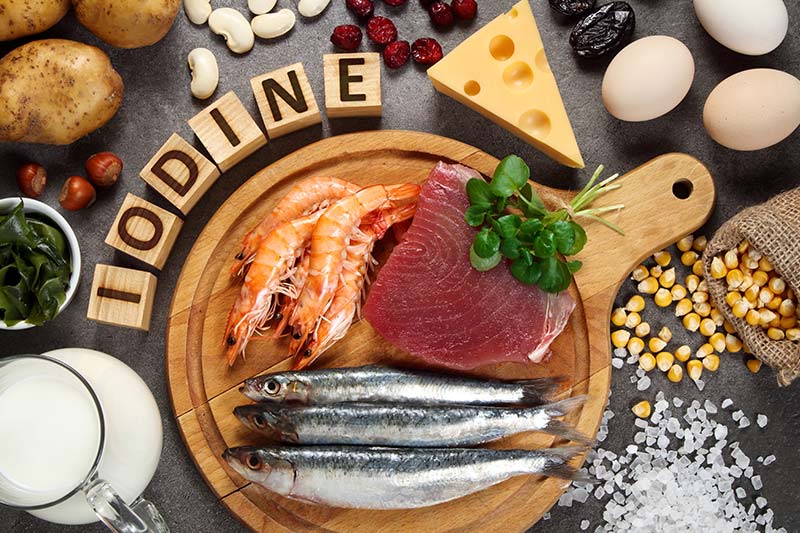Satellite Office
4660 Kenmore Avenue, Suite 416Alexandria, VA 22304
703-620-4300

I’m in the business of eyes. But I recently reread a tremendous book about our whole-body health, and it contains information I think everyone should know. It’s called “The Iodine Crisis: What You Don’t Know About Iodine Can Wreck Your Life” by Lynne Farrow. In truth, most of us don’t know much about iodine, other than it’s that stuff they put in salt.
It turns out that iodized table salt is a very inconsistent source of iodine since the iodine starts to evaporate out of the table salt container as soon as it is opened. That’s a problem because humans need iodine to survive, but we can’t produce it. Traditionally, experts have seen iodine as important for thyroid health; without it, your thyroid will enlarge, and you’ll form a goiter. So-called experts decided our thyroid gland needs 150 micrograms of iodine each day, and as a result, it became the recommended daily dose.
Unfortunately, research has since found that amount to be woefully inadequate. Your thyroid gland uses only 1% of the total iodine needed by the body on a daily basis. Skin, breasts, prostates, and other body parts also need this element to remain healthy. Iodine deficiency is particularly dangerous because it is associated with an increased risk of developing breast cancer and prostate cancer. Studies have shown that most individuals are taking in 50% less iodine when compared to the early 1970s.
In the mid 1970s, iodine that had been used medicinally for over one hundred years was labeled dangerous for the thyroid if given in higher dosages. Iodine was subsequently stripped from flour and replaced with bromine — even though bromine is now considered toxic and is banned in some countries. You can still find iodized salt if you look for it, but as mentioned before, iodine dissipates over time, meaning that the “iodized salt” sitting in your cupboard for months or years has almost no appreciable iodine. And all that bromine that we consume blocks our iodine receptors and prevents the iodine from getting to the critical tissues in the body.
So, what can you do? There are a tremendous number of iodine supplements on the market, but the two most common are Lugol’s 2% or 5% solution and Iodoral 12.5mg or 50mg tablets. My wife, Tala, and I each take Iodoral 12.5 mg because it’s easier on the stomach. People who begin taking iodine supplements can see improvement in many conditions, including but not limited to allergies, brain fog, menstrual irregularities, fibrocystic breast disease, weight gain, depression, hearing loss, and prostate disease.
|
For more information, pick up Lynne Farrow’s book or visit BreastCancerChoices.org and click on the “Iodine” tab at the top. Also, a great review of common myths about iodine can be found by searching online for “Busting the Iodine Myths” by David Brownstein. As always, don’t forget to first consult your doctor before starting any new supplement(s). It is extremely important to note that some forms of iodine, like tincture of iodine and Betadine (povidone-iodine), are toxic if taken by mouth. We only get one body, so stay safe and protect your health! |
  |